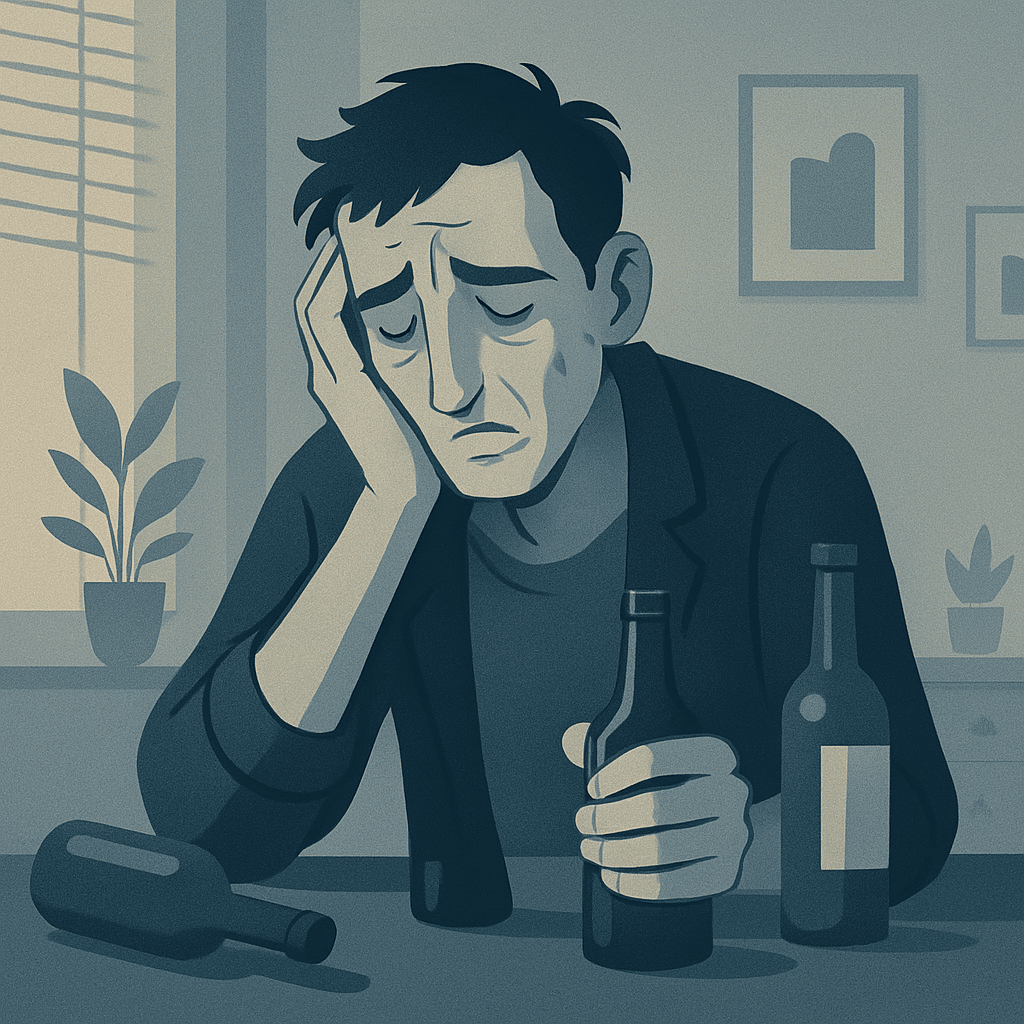Key Takeaways
- Self-harm involves intentionally causing injury to oneself as a coping mechanism for emotional distress, without suicidal intent.
- Self-harm can share characteristics with behavioral addictions, such as compulsive behavior, temporary emotional relief, and difficulty stopping despite negative consequences.
- Recognizing self-harm patterns involves observing both physical signs (unexplained injuries, covering up) and emotional indicators (mood swings, feelings of worthlessness).
- Effective treatment includes professional therapy like CBT and DBT, medication for underlying conditions, and supportive community resources.
- At A Mission For Michael (AMFM), we offer specialized, accredited mental health treatment programs with evidence-based approaches specifically designed to help those struggling with self-harm behaviors.
What is Self-Harm?
Self-harm is a term that refers to intentionally inflicting harm on oneself, usually as a way to cope with emotional distress. We need to note that self-harm does not equate to suicidal behavior; instead, it is often a mechanism for dealing with overwhelming emotions or psychological pain. The behavior can manifest in various forms, such as cutting, burning, or hitting oneself.
Self-harm, also known as non-suicidal self-injury (NSSI), can be a complex behavior to understand. It often serves as a coping mechanism for those experiencing intense emotions or mental health issues. People who self-harm might find temporary relief from their emotional pain, but this relief is usually short-lived and followed by feelings of guilt or shame.
| A Mission For Michael: Expert Mental Health Care Founded in 2010, A Mission For Michael (AMFM) offers specialized mental health care across Southern California, Washington, and Virginia. Our accredited facilities provide residential and outpatient programs, utilizing evidence-based therapies such as CBT, DBT, and EMDR. Our dedicated team of licensed professionals ensures every client receives the best care possible, supported by accreditations from The Joint Commission and the California Department of Health Care Services. We are committed to safety and personalized treatment plans. Start your recovery journey with AMFM today! |
How is Self-Harm Similar to Addiction?
Addictions typically involve a compulsive need to engage in a behavior despite negative consequences. This behavior often provides a sense of pleasure or relief, and over time, individuals may require more frequent or intense engagement to achieve the same effect.
Some individuals who self-harm may develop a pattern that resembles addiction. The repetitive nature of self-harm, coupled with the emotional relief it provides, can create a cycle that is difficult to break.
Self Harm as Habit
Self-harm can become habitual for some individuals, making it challenging to stop without intervention. The behavior might start as a way to cope with emotional distress, but over time, it can become a deeply ingrained habit. This habitual nature can make self-harm feel similar to addiction, as individuals might find themselves compelled to engage in the behavior even when they want to stop.
Similarities with Addiction
While self-harm is not classified as an addiction in the Diagnostic and Statistical Manual of Mental Disorders (DSM-5), it shares several similarities with behavioral addictions. Both involve compulsive behaviors that provide temporary relief from emotional distress. In both cases, individuals might feel a strong urge to engage in the behavior, despite knowing the potential harm it can cause.

The cycle of relief and guilt associated with self-harm can mirror the cycle seen in addiction.
This resemblance can make it challenging for individuals to break free from the behavior without support.
Recognizing Patterns
Behavioral Signs
Behavioral signs of self-harm can include frequent injuries, wearing long sleeves or pants even in warm weather to cover scars, and spending long periods alone. The manner of approach to these signs require empathy and understanding, as they might indicate a need for support.
Emotional Indicators
This can look like feelings of worthlessness, hopelessness, or intense emotional distress. Individuals who self-harm may also experience mood swings or difficulty managing their emotions. They may be prone to having:
- Frequent injuries or scars, often explained as accidents.
- Changes in behavior, such as increased secrecy or withdrawal from social activities.
- Emotional distress, including feelings of shame, guilt, or worthlessness.
Reasons Behind Self Harm
Self-harm often stems from a need to cope with overwhelming emotions. In some cases, it may be a response to unresolved trauma or stress. Underlying mental health issues, such as depression or anxiety, can contribute to self-harming behaviors.
These factors, among others, play a significant role in why individuals might turn to self-harm as a way to manage their emotional pain.
It is vital that self-harm should not be viewed as attention-seeking behavior. Instead, it should be viewed as a complex coping mechanism that requires understanding and empathy from those around the individual.
Emotional Coping Mechanism
For many, self-harm serves as an emotional coping mechanism when emotions become too intense or overwhelming. Similar to addictive behavior, self-harm might provide a temporary release or distraction from these feelings. This can create a sense of control over one’s emotional state, albeit a temporary and harmful one.
Underlying Mental Health Issues
Often, self-harm is linked to underlying mental health issues such as depression, anxiety, or borderline personality disorder. These conditions can amplify feelings of distress and lead individuals to seek relief through self-injury.
Aside from this, we must consider that each person’s experience with self-harm is unique.

A mental health professional can help determine the specific factors contributing to an individual’s behavior and tailor treatment accordingly.
Influence of Stress and Trauma
Stress and trauma are significant contributors to self-harm as traumatic experiences. These experiences, whether recent or from further in the past, can leave individuals feeling overwhelmed and unable to cope. In such cases, self-harm might serve as a way to express or manage the emotional aftermath of trauma.
Support and Treatment Options
Professional Therapy
Professional therapy is an effective method of treatment for self-harm. Therapists can help individuals explore the underlying causes of their behavior and develop healthier coping strategies. Cognitive-behavioral therapy (CBT) and dialectical behavior therapy (DBT) are common approaches that have shown effectiveness in treating self-harm.
Medication
Medication can play a role in managing the mental health conditions that contribute to self-harm. Antidepressants, mood stabilizers, and anti-anxiety medications can help regulate emotions and reduce the urge to self-harm.
Peer Support Groups
Peer support groups offer a unique opportunity for individuals to connect with others who understand their experiences.

Sharing stories and coping strategies in a supportive environment can provide a sense of community and reduce feelings of isolation.
Finding Support and Healing
At A Mission For Michael (AMFM), we understand the complex nature of self-harm behaviors and recognize that recovery requires compassionate, professional support. Self-harm often serves as a coping mechanism for deep emotional distress, and while it shares characteristics with addiction—such as compulsive urges and temporary relief—breaking free from these patterns is possible with the right help.
Our accredited facilities across Southern California, Washington, and Virginia provide specialized treatment programs designed to address not just the self-harming behaviors, but the underlying mental health conditions and emotional pain that drive them.
Our team of licensed professionals utilizes evidence-based therapies including CBT, DBT, and EMDR—approaches proven effective for individuals struggling with self-harm.

For individuals seeking residential care or outpatient support, our programs offer a safe, understanding environment where you can develop healthier coping mechanisms and work through emotional challenges.
Self-harm doesn’t have to define your future. With professional guidance, proper treatment, and ongoing support, recovery is achievable.
Frequently Asked Questions (FAQ)
Is self-harm actually considered an addiction?
While self-harm isn’t officially classified as an addiction in the DSM-5, it shares many similarities with behavioral addictions. The repetitive nature, the temporary relief it provides, and the difficulty stopping despite negative consequences all mirror addiction patterns.
What are the warning signs someone might be self-harming?
Warning signs include unexplained cuts, burns, or bruises, wearing concealing clothing even in warm weather, social withdrawal or isolation, expressing feelings of worthlessness or hopelessness, and having difficulty managing emotions.
Can someone recover from self-harm behaviors?
Yes, recovery from self-harm is absolutely possible with appropriate support and treatment. Many individuals who previously engaged in self-harm develop healthier coping mechanisms through therapy, medication if needed, and support systems.
How should I respond if someone tells me they’re self-harming?
Respond with empathy, not judgment. Listen calmly, express concern without showing shock or disgust, and avoid ultimatums or demands to stop. Thank them for trusting you, and gently encourage them to seek professional help.
How does A Mission For Michael treat patients who struggle with self-harm?
At A Mission For Michael (AMFM), we provide comprehensive, personalized treatment for individuals struggling with self-harm. Our approach includes evidence-based therapies such as CBT, DBT, and EMDR delivered by licensed professionals.
The post Is Self Harm an Addiction: What You Need to Know appeared first on A Mission For Michael.